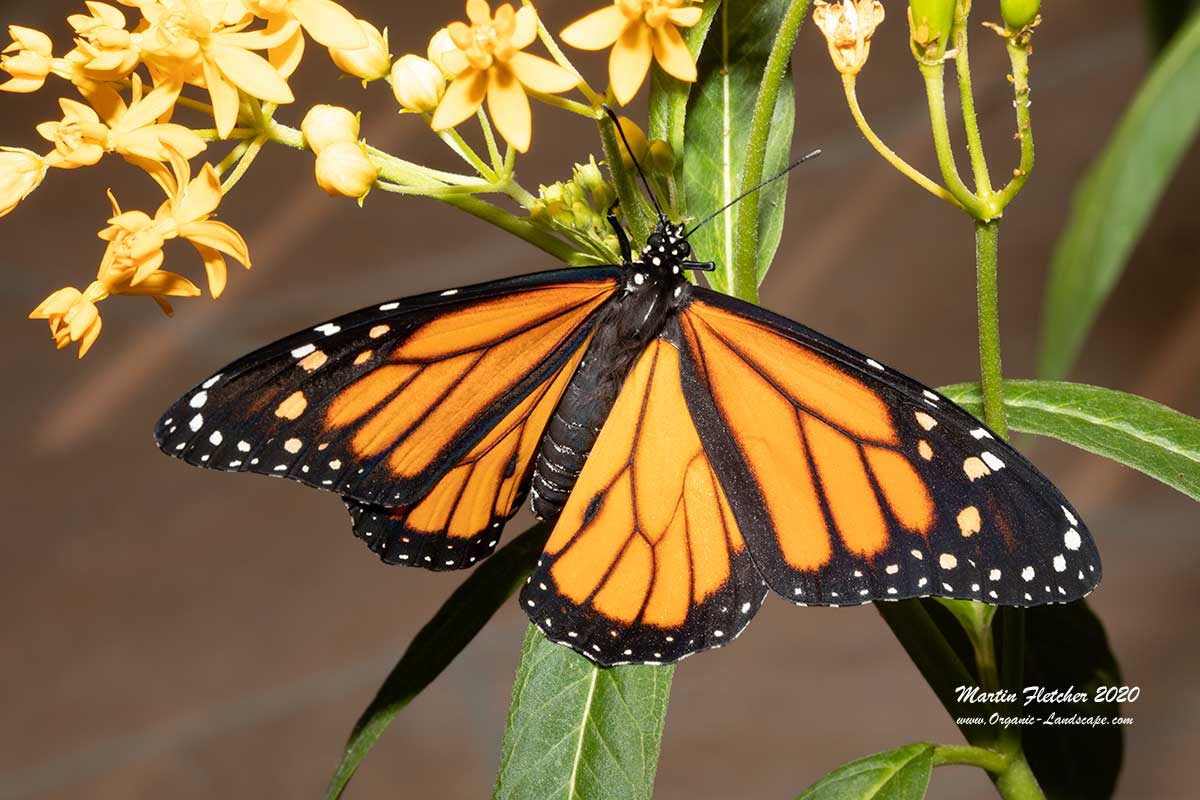Monarch Male * Danaus plexippus
Finding the beauty around us

Monarch Adult Male.
Original image 30.4 Mp - Cropped image 6720 x 4480
Follow the Monarch Life Cycle - The first step for an adult butterfly after eclosing is to fill its wings with fluids. This male monarch was doing that over the course of an hour or two as I was working nearby and flew away a few minutes after I got this shot. You can tell that he is a male by the black spots on the back wing. He is collecting himself on a tropical milkweed, Asclepias currassavica Silky Gold. There is concern about tropical milkweeds and OE, a parasitic protazoan. It is a native organism and in moderate numbers is not a problem. But when the OE protazoans accumulate it weakens the monarchs. Tropical milkweeds in our coastal gardens do not go dormant. This allows the OE population to get to dangerous levels. Cutting back tropical milkweed nearly to the ground in the winter minimizes this issue. OE exhibits as a crumpling of the wings, the monarchs are unable to fill their wings like this one has. Female monarchs do not have a spot on the hind wings.
Organic Landscape Home
Insects and Other Arthropods
Bird Photographs List
Mammals
Reptiles and Amphibians
Photographs by Martin Fletcher
